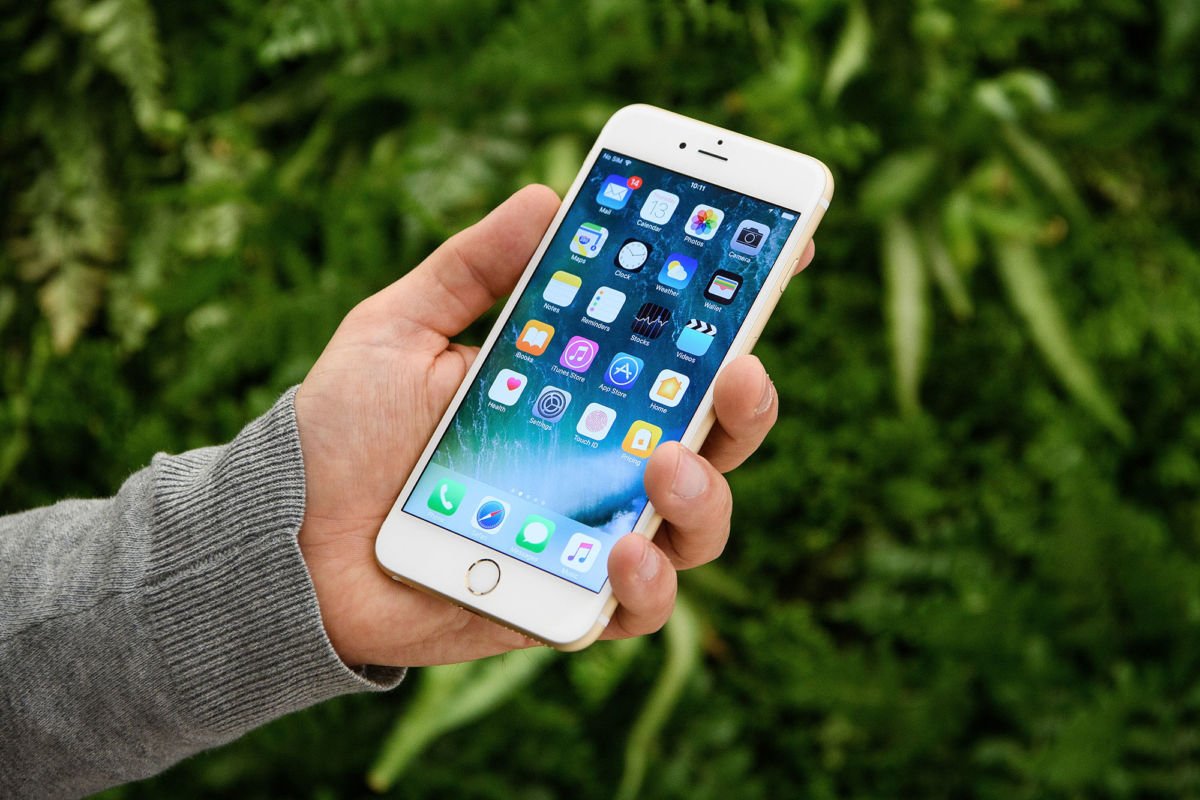
 ple’s design prowess, long celebrated—even venerated—has taken some nasty hits since the release of the iPhone 7. Technology watchers have been dismissive. “Apple has squandered its once-commanding lead in hardware and software design,” Farhad Manjoo, of the New York Times, wrote. He added, “As competitors have borrowed and even begun to surpass Apple’s best designs, what was iconic about the company’s phones, computers, tablets and other products has come to seem generic.” This is a conundrum for Apple. Its design is iconic—and pleasing—enough for others to blatantly imitate, making it hard to escape the ubiquity of its own design.
ple’s design prowess, long celebrated—even venerated—has taken some nasty hits since the release of the iPhone 7. Technology watchers have been dismissive. “Apple has squandered its once-commanding lead in hardware and software design,” Farhad Manjoo, of the New York Times, wrote. He added, “As competitors have borrowed and even begun to surpass Apple’s best designs, what was iconic about the company’s phones, computers, tablets and other products has come to seem generic.” This is a conundrum for Apple. Its design is iconic—and pleasing—enough for others to blatantly imitate, making it hard to escape the ubiquity of its own design.
Echoes of the iPhone are everywhere. Xiaomi’s phones and Google’s new Pixel are designed to fool you into thinking that they just might be an iPhone. Samsung, famously, was found to have infringed Apple’s iPhone design patents, a case that made its way to the Supreme Court. In 2012, a jury told Samsung to pay a billion dollars in damages to Apple. The award was reduced to five hundred and forty-eight million dollars last year, and Samsung is now challenging about four hundred million of that amount. The Supreme Court will weigh in on whether damages should be awarded based on the entire phone, or just on those parts that infringed Apple’s patents.
That Samsung is facing such steep costs suggests the appeal of the original Apple design. When I asked John Maeda, the former president of the Rhode Island School of Design, why, then, people have turned on the design of the iPhone 7, he pointed out that perhaps these critics “seem to believe that there’s some as yet unimaginable transcendence that can happen in a small, palm-shaped, rectangular device.” Maeda said that he spent time with designers at Sony and felt their frustration designing a television set “because all you can really do is design the rectangle that the TV sits within. . . . Everything else around that screen really doesn’t matter.” The same problem holds for the iPhone. All that matters is the screen—its size, brightness, and resolution. “Now that we have all those dimensions sated, it’s basically the challenge of designing a TV set all over again,” he added.
Standing out in such an environment is not easy. Car design is less restricted, but still, every decade, you see car designs react to new technologies and new regulations and end up in a place where they become forgettable. This is not true of Porsche. As one Porsche design expert is said to have told his underlings, “You are not here to design the most beautiful sports car, you are here to design the best Porsche.” The design language of the Porsche brand is “iconic.”
In 1947, Porsche began work on its 356. In many ways it was like the original iPhone. It wasn’t perfect. It was underpowered. But it was streamlined and aerodynamic. From the 356 to the 911, a distinctive marriage of form, function, design, and brand ruled every design. It became the core around which Porsche was built.
Porsche’s and Apple’s design philosophies are similar. Much like the 356, the original iPhone was about defining a foundation for the future. It was different from other phones on the market—it made a rectangular touchscreen the main way to interact, displacing buttons and keypads. Now the iPhone is the essence of a phone.
The MacBook, the iPad, and the iPhone are all a study in constant refinement. Sure, there are product designs that leave us scratching our heads—having a USB-C charging port on one laptop and something else on another, for example—but place the first iPhone next to the latest one and you can see their common language. The same goes for the iPad and the MacBook.
“Families of aspirational products share a strong design language—the code which describes how they look, feel, and function. Like a thriving spoken tongue, a vibrant design language is shaped by where it’s been, yet it also evolves by appropriating new bits from contemporary culture,” Diego Rodriguez, a partner at ideo, a San Francisco-based design studio, said. “This is the case with Apple, where you can clearly see design elements from the original PowerBook in the iPhone 7.”
Design, however, is more than just looks, a point that has been well illustrated by Samsung and the terrible trouble it has had with its flagship device, the Galaxy Note 7. When it was released, reviewers were blown away by its ravishing good looks. “The Note 7 is Samsung’s best device ever, and arguably the best big phone ever made,” the Verge wrote. “It has a gorgeous, symmetrical design that looks particularly stunning in Coral Blue,” CNET gushed. The Wall Street Journal bubbled with joy: “I love the curved edges of the screen and how it makes the footprint of the phone smaller.”
Now Samsung is suffering an enormous setback. The Galaxy Note 7 has been found to overheat and explode, and the South Korean giant has withdrawn millions of units from the market and ceased production of the device. The debacle will cost the company about three billion dollars, and a lot more in terms of the brand’s reputation.
As I read the coverage of the iPhone 7 design, Samsung’s troubles, and the legal rumbles between Apple and Samsung, it became obvious that we, collectively, have a misunderstanding of what design is, especially when it comes to connected devices. Many technology reviewers make the very human mistake of thinking about beauty and design as skin deep, overlooking what’s inside. I look at the new iPhone 7—and particularly the iPhone 7 Plus—and see huge technological leaps.
Matthew Panzarino, the editor of the technology news site Techcrunch, recently wrote, “If you’re a fan of reading the Apple tea leaves to see what it’s going to do next, and in turn how it will influence the industry, then the iPhone 7 and iPhone 7 Plus are the most interesting iPhones ever.” Apple’s iPhone 7 devices are truly computing monsters—the iPhone 7 is said to outpace some Macs, not to mention other phones. Its core processor is forty per cent faster than its predecessor and a hundred and twenty times faster than the original iPhone. The iPhone 7 internals are able to do complex and intensive computing tasks right on the device, instead of trying to send them to the cloud for heavy lifting.
To some, including David Smith, the chief executive of Wearality, a virtual-reality company, the iPhone’s oomph makes it a perfect platform for giving augmented and virtual-reality applications a big boost. “Today, these phones are supercomputers,” he said. “As soon as we can turn your phone into an imaxtheatre, that’s game over.” The Apple design that so many find boring is doing what it’s supposed to do. It hides the technological complexities—chips, storage, and batteries—revealing itself with the power of an app or a perfect photograph.
In comparison, Samsung, in a race to beat Apple and pack more technology into its devices, forgot that, in the end, performance matters above all else. “The Note 7 had more features and was more complex than any other phone manufactured,” Park Chul-wan, the former director of the Center for Advanced Batteries at the Korea Electronics Technology Institute, told the New York Times. “In a race to surpass the iPhone, Samsung seems to have packed it with so much innovation it became uncontrollable.” But integrating core and complex technologies is table stakes in technology business—especially in smartphones. There is no excuse for Samsung to fail at something so basic.
The seamless interaction between the technologies hidden behind the screen, the software, and our services is good design. Apple thus far has made sure that it gets most of that experience right—especially the stuff under the hood. Perhaps the next time someone criticizes its designs, we should remember: good design means your phone doesn’t explode.
[Source:-The New Yourker]





